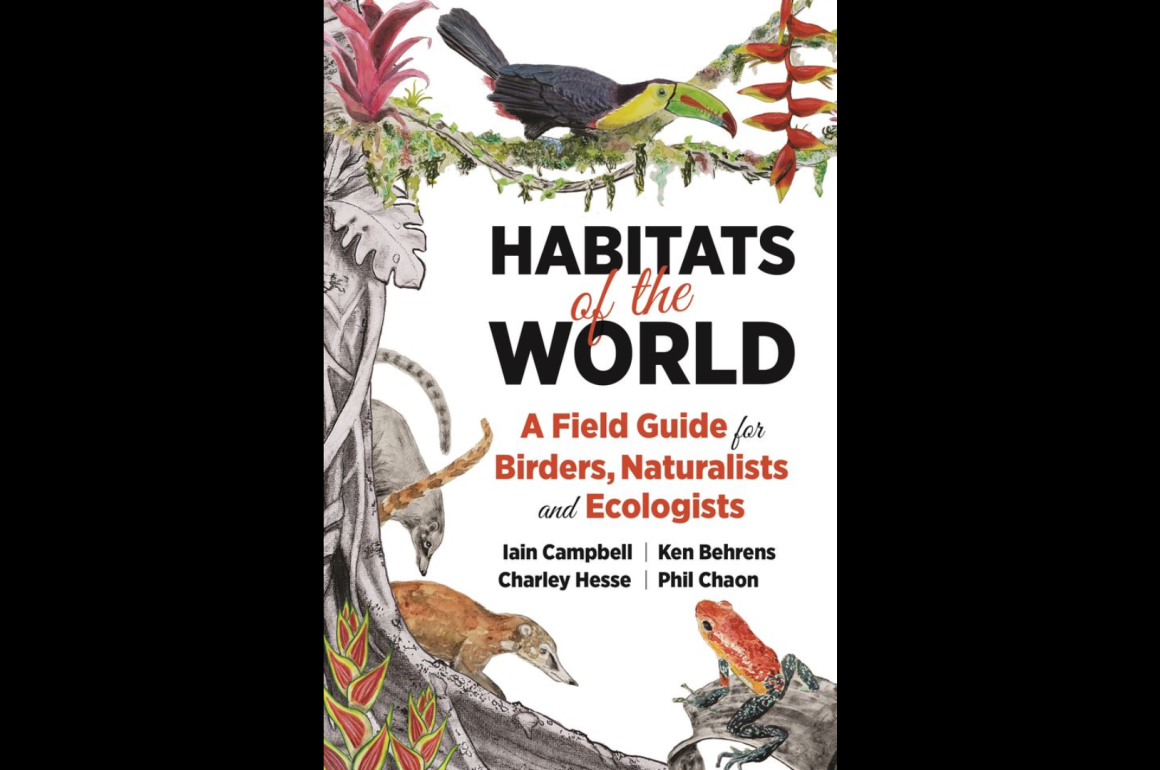
This field guide leaves me nothing short of impressed. It covers everything a birder wants to know about the world, and that is poorly covered in school. Here’s an example: born and bred in Europe, I do not know much about the tropics, especially the bird-rich New World tropics. In recent years I was mostly poorly prepared when I visited the American tropics several times. Yes, I had local bird books, but only during my second tour of Costa Rica did I finally buy a mammal guide, and only after my trip to Colombian Amazon did I obtain a habitat guide. I had some books on worldwide biomes, but they were too general to help me understand the ecosystems I was about to dive into.
My last overseas trip was to Costa Rican middle elevation Caribbean slopes and Talamanca montane highlands – that much was explained in the local bird guide. But it doesn’t explain why the local habitats look like they do, or why those particular birds are characteristic of them. And understanding habitats in detail is essential to any birder who wants to get the most out of his experiences in the field.
Habitats of the World is the first field guide to the world’s major land habitats—189 in all. This comprehensive book features concise identification descriptions and is richly illustrated—including more than 650 colour photos of habitats and their wildlife, 150 distribution maps, 200 diagrams, and 150 silhouettes depicting each habitat alongside a human figure.
Presuming I am an absolute beginner, who has no clue about habitats of Costa Rica, let me see what the Habitats of the World has to say about those areas. Page 101, chapter Habitats of the Neotropics, lovely photos of a Cougar and a Resplendent Quetzal, and a bit of a smallish map of biomes of Central and South America. Not going to Brazil, but to tiny Costa Rica, I had to use a magnifying glass to see what biome colours were there: brown (dry deciduous forest), green (evergreen and semi-evergreen forests) and ochre (savannas). Purple code for Paramo and tundras does not appear at this map, but Costa Rica (Monteverde and Talamanca) will appear at this habitat distribution map later within the same chapter.
That same “green forests” colour code appears again at page 124: Neotropical Lowland Rainforests. Judging through the magnifying glass again, they cover most of the Caribbean slope, plus Ossa Peninsula. Next to the distribution map for this habitat is a silhouette depicting the habitat alongside a human figure for scale (child-like drawing of a man – sometimes a woman – in the forest) and providing an immediate grasp of its look. Also, each major habitat is accompanied by an illustrated climate graph that allows easy comparisons between habitats. Three pages of text are illustrated with superb photos of a forest in the mist, two birds and a mammal. The text deals with general description, wildlife, endemism (possibly the most exciting sub-chapters in the book), distribution and where to see (that is, particularly good spots within this habitat type, like the lodges in the Manu national park).
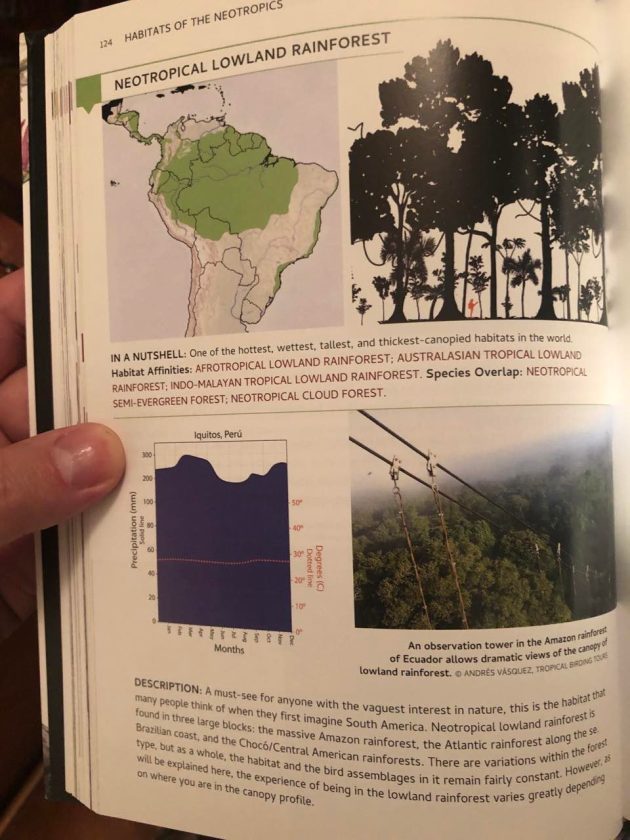
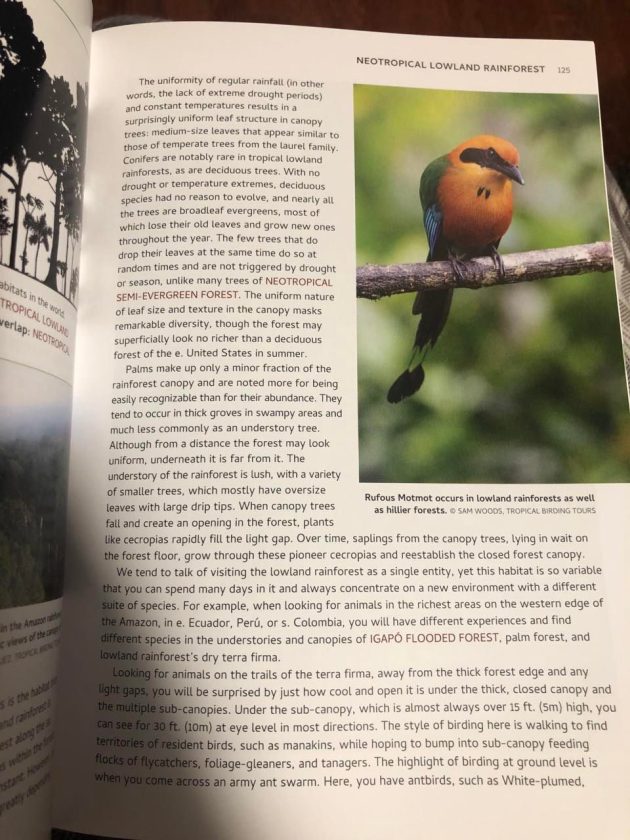
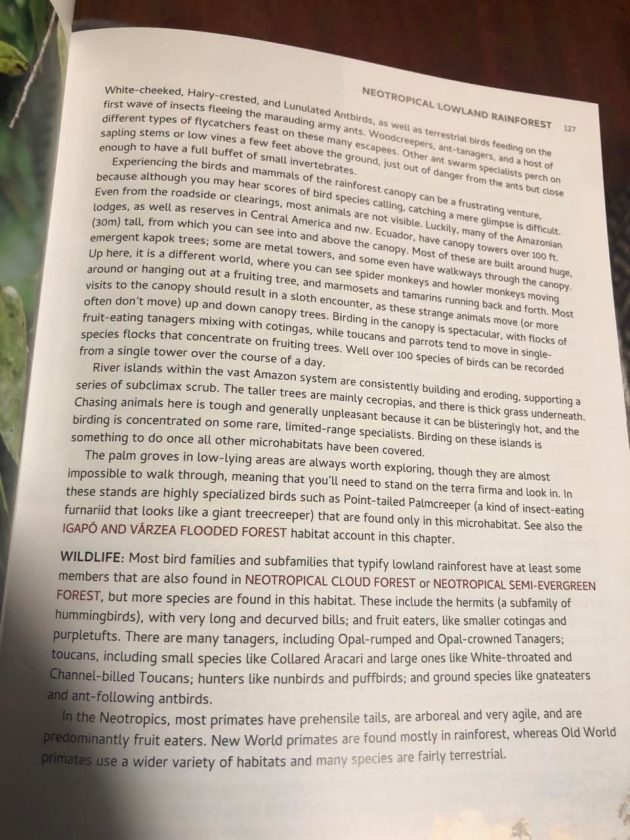
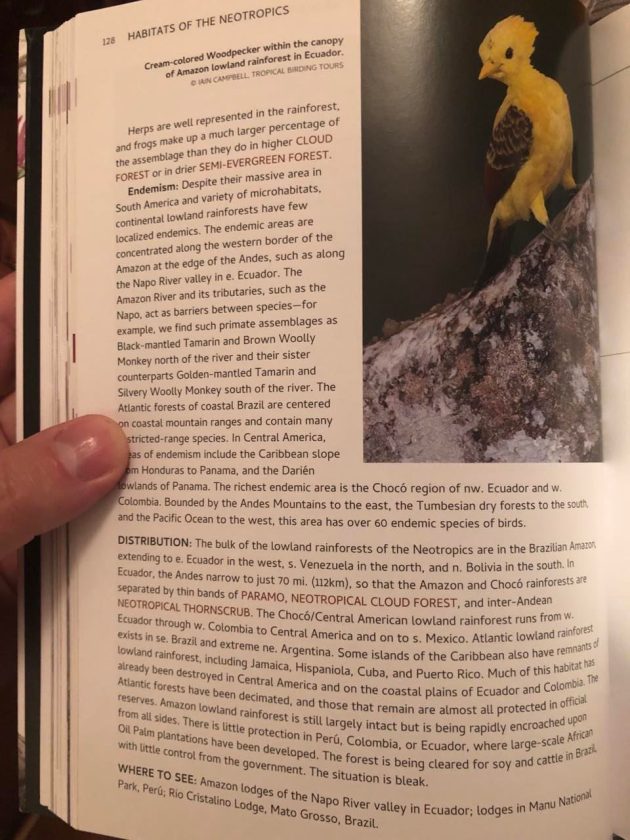
At page 129 comes another green-coded habitat of Costa Rica: Neotropical Semi-Evergreen Forest (through the magnifying glass again, they cover most of the Pacific slope). The next green one, Neotropical Cloud Forest, seem to be marked only for the lowland Carara region of Costa Rica (if I understand well, that would be incorrect), and not for Monteverde nor the Talamanca highlands and I distinctly remember birding the cloud forests in both regions. Umm, the next green chapter, Elfin and Stunted Cloud Forest is marked for Carara, again…
Ochre-coded habitat chapters, now, Costa Rica is not even shown on their distribution maps! Yet, a few more chapters and it seems that the pale-yellow (Neotropical Flooded Grassland and Wetland) does appear in the north of the country (which is likely correct, but even with a magnifying glass, I am not entirely certain of the map colouration)?
I mean, the illustrations and the text are truly magnificent, but there are people nosy enough to check the maps with magnifying glasses! Honestly, I wasn’t looking for inconsistencies – I simply prefer to navigate maps instead of going through the Contents listing.
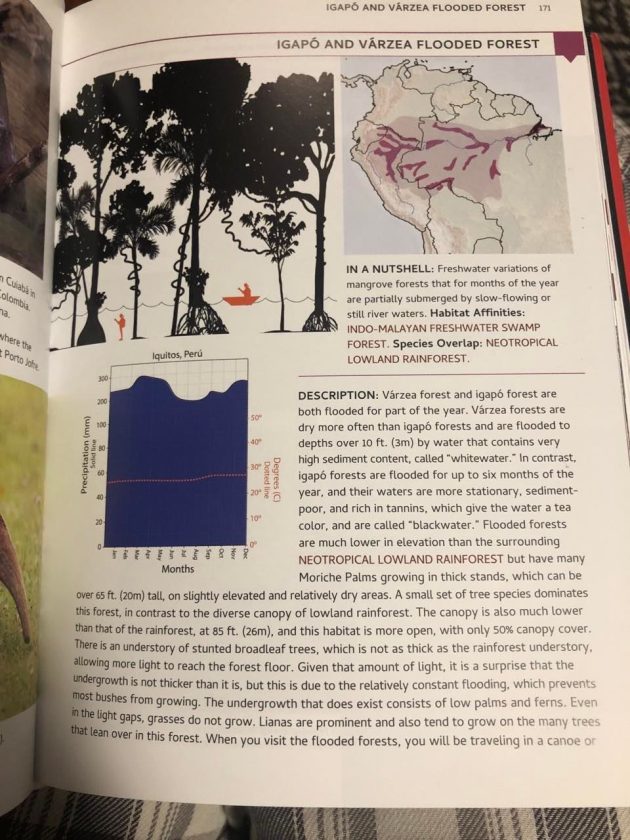
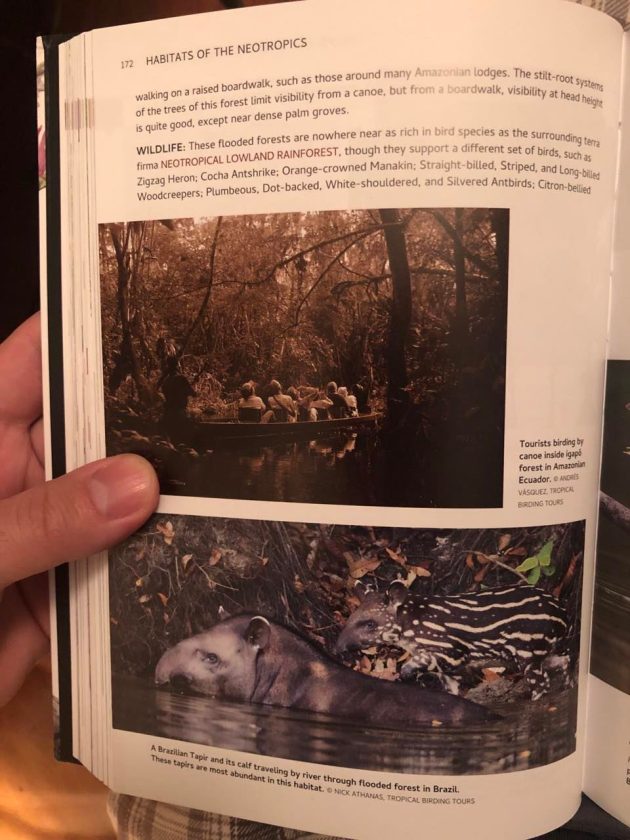
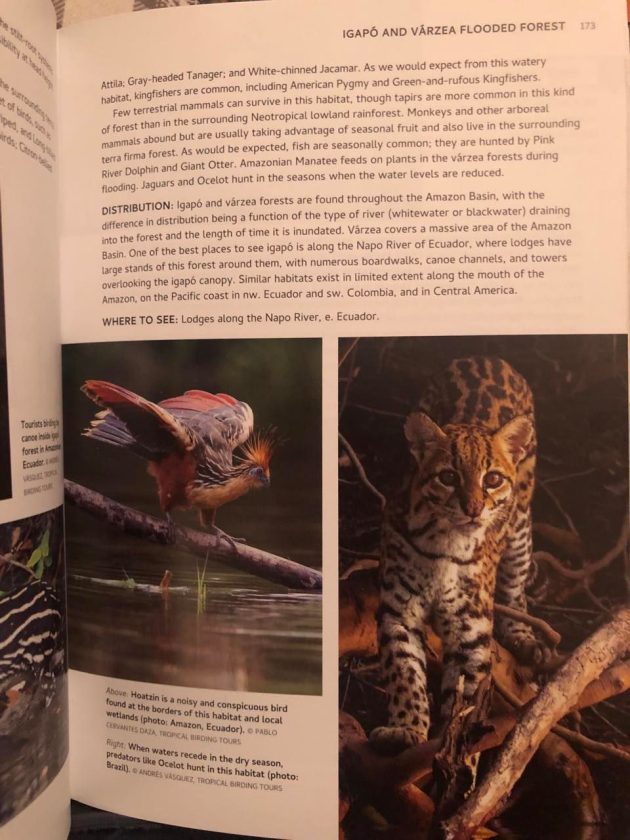
Minor inconsistencies aside, the textual descriptions are a real gem. They are down to earth and read like a great where-to-watch-birds guide, nowhere near the usual boring scientific descriptions. Where in school textbooks can you find a habitat description like this: The stilt-root systems of the trees of this forest limit visibility from a canoe, but from a boardwalk, visibility at head height is quite good, except near dense palm groves?
It comes as no surprise as the authors are birders and bird guides themselves. Iain Campbell is the co-author of Birds of Australia and Wildlife of Australia (both Princeton), and a professional nature guide and tropical landscape geochemist. Ken Behrens, Charley Hesse, and Phil Chaon are professional nature guides. Behrens is a co-author of Birds of Kruger National Park and Wildlife of Madagascar (both Princeton WILDGuides).
I focused mostly on exotic destinations and habitats that every birder wants to explore and experience, but it should not be forgotten that this field guide deals with the entire world, including those areas and habitats where you grew up and do most of your birding. To tell you the truth, I do not know how I made it without this guide for such a long time. Absolutely highest recommendation.
Habitats of the World: A Field Guide for Birders, Naturalists, and Ecologists
By: Iain Campbell, Kenneth Behrens, Charley Hesse, and Phil Chaon
568 pages, 650+ colour photos, 200 colour illustrations, 150 colour distribution maps
Flexibound
Publisher: Princeton University Press
ISBN: 9780691197562
Published: Sep 2021













Leave a Comment